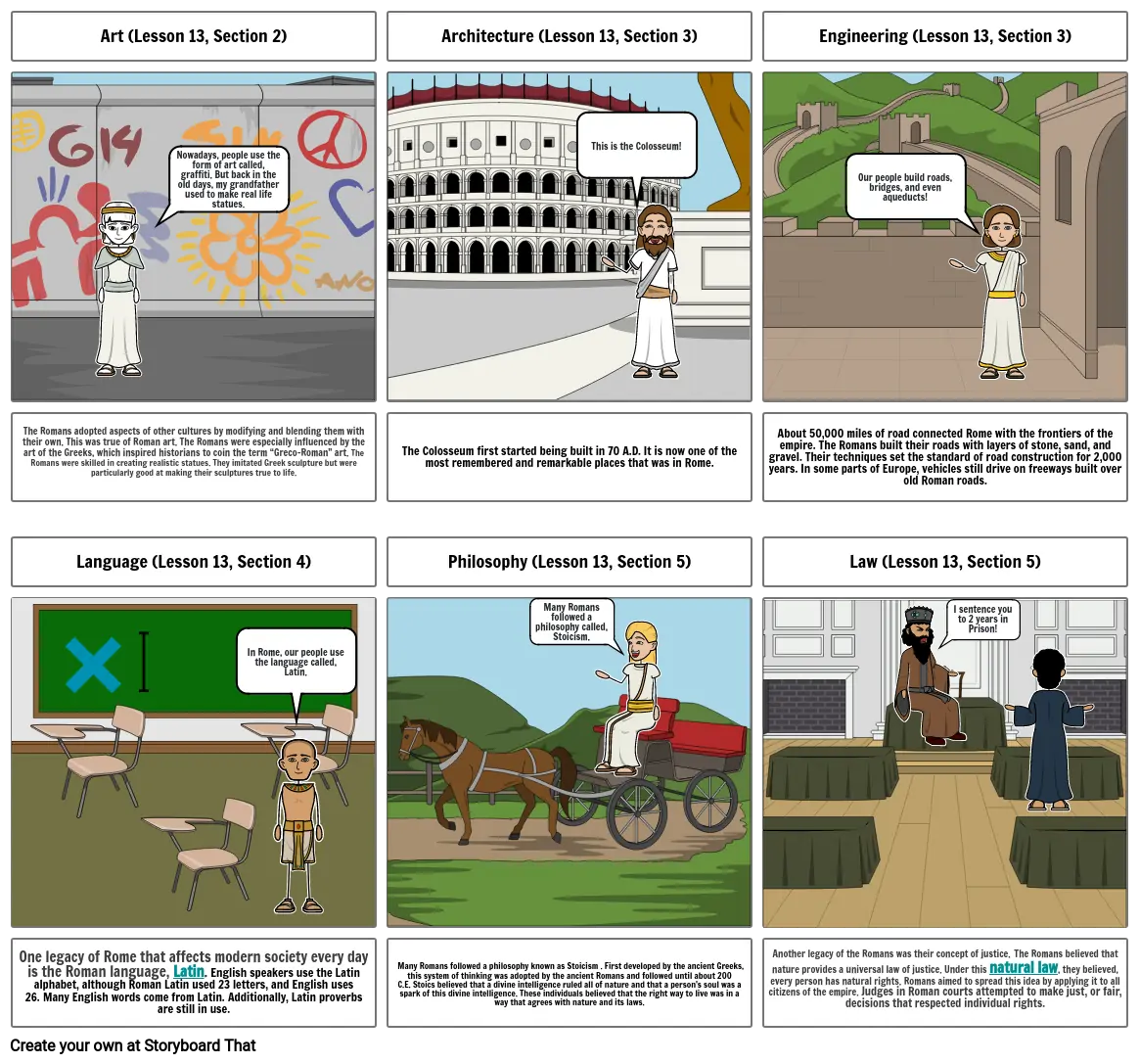Roman Storyboard activity - Unit 13 - Trista Svec

Texto del Guión Gráfico
- Art (Lesson 13, Section 2)
- Nowadays, people use the form of art called, graffiti. But back in the old days, my grandfather used to make real life statues.
- Architecture (Lesson 13, Section 3)
- This is the Colosseum!
- Engineering (Lesson 13, Section 3)
- Our people build roads, bridges, and even aqueducts!
- The Romans adopted aspects of other cultures by modifying and blending them with their own. This was true of Roman art. The Romans were especially influenced by the art of the Greeks, which inspired historians to coin the term “Greco-Roman” art. The Romans were skilled in creating realistic statues. They imitated Greek sculpture but were particularly good at making their sculptures true to life.
- Language (Lesson 13, Section 4)
- In Rome, our people use the language called, Latin.
- The Colosseum first started being built in 70 A.D. It is now one of the most remembered and remarkable places that was in Rome.
- Philosophy (Lesson 13, Section 5)
- Many Romans followed a philosophy called, Stoicism.
- About 50,000 miles of road connected Rome with the frontiers of the empire. The Romans built their roads with layers of stone, sand, and gravel. Their techniques set the standard of road construction for 2,000 years. In some parts of Europe, vehicles still drive on freeways built over old Roman roads.
- Law (Lesson 13, Section 5)
- I sentence you to 2 years in Prison!
- One legacy of Rome that affects modern society every day is the Roman language, Latin. English speakers use the Latin alphabet, although Roman Latin used 23 letters, and English uses 26. Many English words come from Latin. Additionally, Latin proverbs are still in use.
- Many Romans followed a philosophy known as Stoicism . First developed by the ancient Greeks, this system of thinking was adopted by the ancient Romans and followed until about 200 C.E. Stoics believed that a divine intelligence ruled all of nature and that a person's soul was a spark of this divine intelligence. These individuals believed that the right way to live was in a way that agrees with nature and its laws.
- Another legacy of the Romans was their concept of justice. The Romans believed that nature provides a universal law of justice. Under this natural law, they believed, every person has natural rights. Romans aimed to spread this idea by applying it to all citizens of the empire. Judges in Roman courts attempted to make just, or fair, decisions that respected individual rights.
Más de 30 millones de guiones gráficos creados

